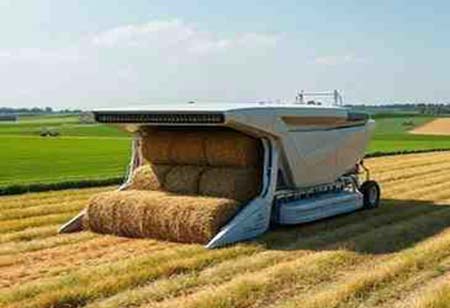Thank you for Subscribing to Agri Business Review Weekly Brief
The Hay Accumulator Systems Market: Adapting to Trends and Navigating Challenges

By
Agri Business Review | Thursday, March 20, 2025
Stay ahead of the industry with exclusive feature stories on the top companies, expert insights and the latest news delivered straight to your inbox. Subscribe today.
The increasing demand for economical, ecological, and practical hay and forage management solutions has driven a steady evolution in the market for hay accumulator systems. These systems' capacity to increase productivity and lower labor costs has made them popular as automation becomes a significant focus in agriculture. Manufacturers are concentrating on enhancing the functionality and adaptability of hay accumulator systems in this environment and meeting the demand for innovation.
Market Trends and Innovations in Hay Accumulator Systems
The need for labor-saving and efficiency-enhancing technologies in agriculture is more significant than ever. The emergence of hay accumulator systems has been one of the most noticeable developments in the field of hay handling. These technologies, which collect and bundle hay faster than human methods, have become essential tools for farmers who want to increase productivity and profitability.
One of the main forces behind this industry is the trend toward automation. Hay accumulator systems now use sophisticated robotics, GPS integration, and sensor technology to guarantee accurate bale placement, collecting, and storage. These technologies make faster, more efficient processes possible, especially during the busiest hay production seasons when prompt turnover is essential.
Manufacturers are putting more and more effort into combining these cutting-edge technologies to develop systems that automate data collection and offer real-time information for improved decision-making. For instance, farmers can check operational indicators, optimize workflows for optimal efficiency, and remotely monitor the performance of their equipment with cloud-based solutions.
Sustainability is now a crucial component of the industry's innovation, coinciding with automation. Manufacturers are already creating hay accumulator systems that use less energy and have a lower carbon footprint. To establish a more sustainable cycle for hay production, these systems utilize environmentally acceptable materials and renewable energy sources. Growing environmental concerns and regulatory demands make such technologies a crucial issue for consumers and the industry.
Challenges Facing Hay Accumulator Manufacturers
Hay accumulator systems producers confront several significant obstacles despite the quickening pace of technological development and increasing demand. The cost of raw materials is essential since it can impact production costs and, in turn, the cost of completed equipment. Increased lead times for manufacturers and their clients result from global supply chain disruptions, which have complicated component sourcing and availability, especially in the agricultural equipment industry.
The requirement for continuous innovation to keep ahead of the competition presents another difficulty. The number of businesses fighting for market share increases with the market's growth. Manufacturers must constantly upgrade their systems to provide distinctive value propositions like increased durability, speed, and usability. Systems that can handle different kinds of hay or fodder and adjust to varying field conditions have been developed due to the drive for innovation. Making sure that these technologies are both affordable and scalable while serving farms of all sizes—from tiny, family-run farms to massive industrial farming operations—is the tricky part.
There are also constant difficulties with serviceability and maintenance. Even though the systems are getting more sophisticated, their intricacy can occasionally result in higher maintenance expenses and more challenging technical issues. To solve this, manufacturers are enhancing the design to make it easier to service and adding self-diagnosis tools, which let farmers deal with problems fast and save downtime while producing hay.
Opportunities and Advancements for Stakeholders
The market for hay accumulator systems is expected to increase significantly over the next several years, providing a range of opportunities for value chain participants. Hay production has increased in response to the growing demand for premium animal feed worldwide, benefiting accumulator system producers. As the agricultural sector modernizes, stakeholders can benefit from technologies that advance efficiency and environmental sustainability.
One of the most exciting prospects in this field is incorporating machine learning (ML) and artificial intelligence (AI) technology into hay accumulator systems. AI can improve bale collection efficiency and reduce operational errors by learning and responding to operational data and environmental circumstances. In addition to increasing the accumulator systems' capacities, this might result in farmers saving a substantial amount of money.
The movement toward precision agriculture presents an additional growth path besides AI. Manufacturers can use more advanced analytics and data collection technologies to create systems that integrate easily with other precision agriculture gear, such as GPS-enabled harvesters and tractors. This integration would increase output and profitability and make farm management more coordinated and efficient.
Stakeholders should also be aware of the increasing focus on multipurpose tools. The systems that farmers need are capable of sorting, bundling, and even loading onto transport vehicles, among other activities beyond hay accumulation. Companies offering flexible systems with several uses will probably gain a competitive advantage.
The trend toward on-demand and localized hay production allows producers to provide smaller farms with specialized solutions. These systems can be customized to fit the particular requirements of area farms, providing affordable options that consider regional agricultural customs and environmental factors.





